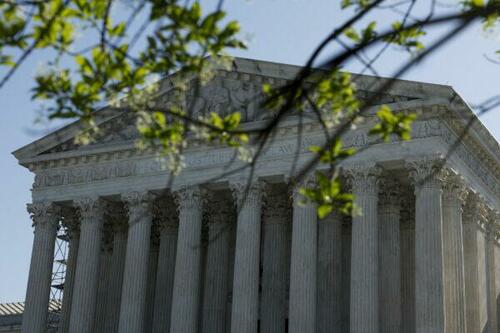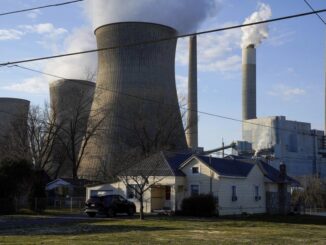
Authored by Nathan Worcester via The Epoch Times (emphasis ours),
After weeks of buildup, the Environmental Protection Agency (EPA) unveiled its strictest-ever rules for power produced using natural gas, coal, and oil that could spur the use of carbon capture technologies.
The standards released on May 11 would impact new and old power infrastructure, including new natural gas turbines and the country’s existing coal fleet. Though the United States still has hundreds of coal plants, the number of such installations has fallen sharply during the past decade.
“We will see some coal retirements,” EPA Administrator Michael Regan told reporters on May 10.
He added that individual states and companies would have significant discretion in terms of implementation.
U.S. Climate Envoy John Kerry in 2021 said America simply “won’t have coal” on its grid by 2030.
The EPA thinks its proposals will induce American power plants to boost their use of certain technologies, including the co-firing of fossil fuels with what it calls low-greenhouse gas (GHG) hydrogen and, in particular, the capture, sequestration, and storage of carbon.
More Details from EPA
Regan told reporters that the standards are about “clean air to breathe,” claiming they would yield “substantial health benefits” as well as “regulatory certainty” for the energy sector.
The agency projects that the standards will help America avoid thousands of premature deaths, tens of thousands of lost workdays, and over 300,000 asthma attacks just in the year 2030.
Regan and others with the EPA repeatedly stressed that they do not believe their vision runs afoul of West Virginia v. EPA.
That landmark Supreme Court decision, decided 6 to 3, concerned a carbon emissions plan for existing power plants put forth by the EPA under former President Barack Obama.
The U.S. Supreme Court in Washington on April 19, 2023. (Anna Moneymaker/Getty Images)
The court found that Congress hadn’t given the agency the authority to issue such emissions caps, referencing the plan’s “generation shifting approach” from coal to natural gas and other sources.
“The proposed limits and guidelines follow EPA’s traditional approach under the Clean Air Act to control pollution from stationary sources by relying on control technologies that are cost-effective and can be applied directly to power plants to reduce CO2,” an EPA spokesperson told The Epoch Times in a May 10 email.
In its 681-page notice, the agency argued that co-firing hydrogen as a substitute for natural gas can qualify as a “system of emission reduction” under the Clean Air Act. It specified that hydrogen would have to be low-GHG, “the availability of which is expected to increase significantly and the cost of which is expected to decline significantly in the near future.”
“The EPA recognizes that even though the combustion of hydrogen is zero-GHG emitting, its production entails a range of GHG emissions, from low to high, depending on the method,” the proposal reads.
The agency claims that technologies to capture 90 percent of carbon dioxide have become “adequately demonstrated” and “cost reasonable” while realizing “substantial emissions reductions.”
2035 Target for Carbon-Free Electricity Still Viable: Officials
The EPA said their proposal offers “ample lead time and substantial compliance flexibilities.” That might appear to conflict with President Joe Biden’s aim of achieving “a carbon pollution-free electricity sector by 2035,” as expressed in a 2021 executive order.
EPA officials and staff told reporters on May 10 that the ambition was still within reach.
Read more here…
Loading…



